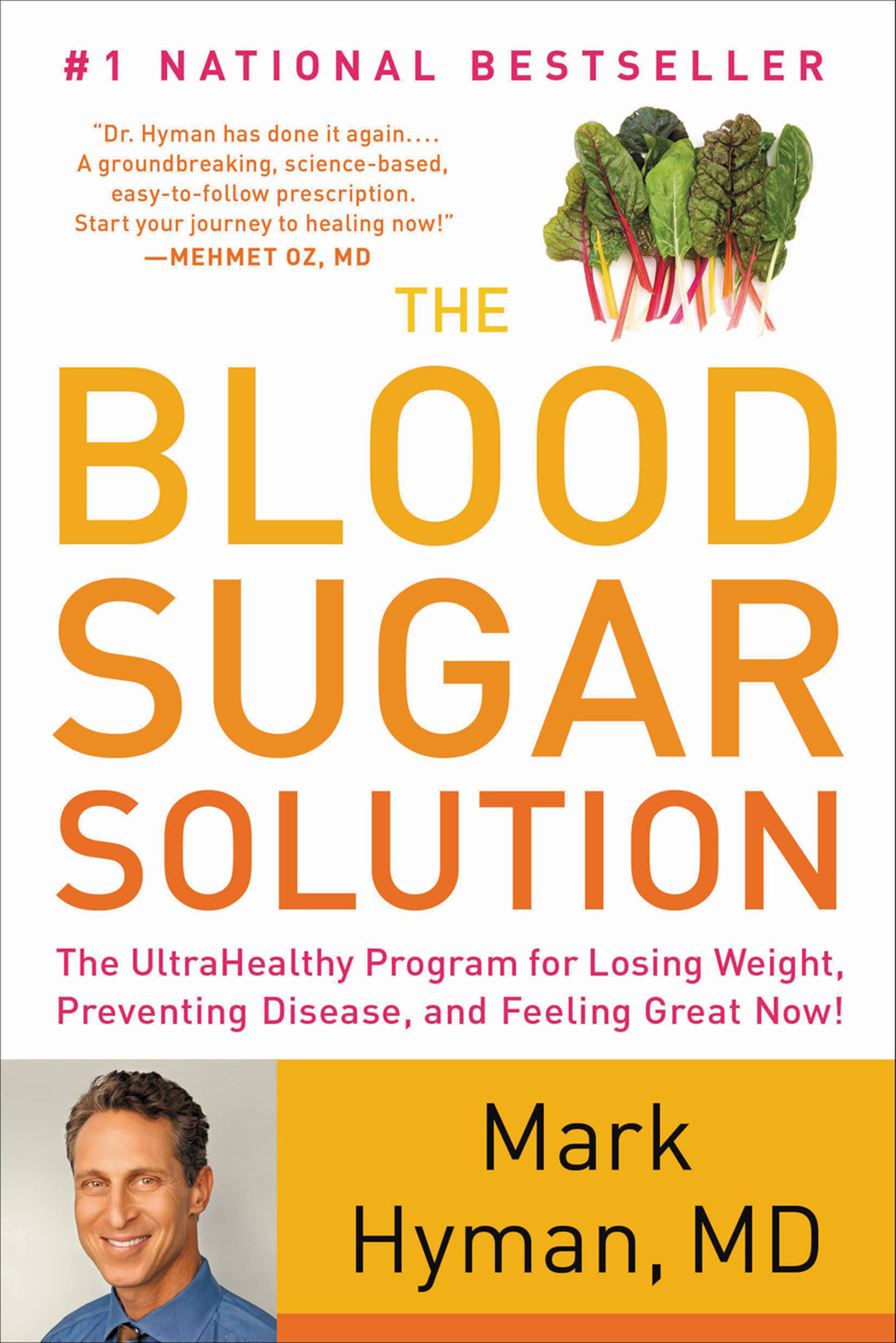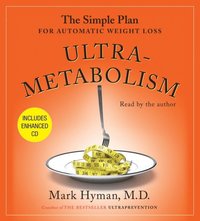Mark Hyman Ultrametabolismo Pdf Viewer
SOON I WILL BE OFFERING you another opportunity to do The UltraSimple Diet Challenge with me as I mentioned in last week’s blog.Let me tell you a little bit about how that will work. In the next few weeks we will send you a special webinar that will outline how you can become part of the next challenge which will launch very soon. In this article, I want to tell you a bit about how the challenge works.On the Challenge, I will to take you through the program I have used exclusively with my patients who come from all over to find help for chronic problems.
I often joke and say I am a resort doctor, the doctor of last resort. I also say I am “wholistic” doctor because I take care of patients with a “whole list” of problems.The truth is that many suffer unnecessarily from problems that have solutions. You just don’t hear about those solutions. This website uses cookies to improve your experience while you navigate through the website.
Mark Hyman Ultrametabolismo Pdf Viewer Free
Out of these cookies, the cookies that are categorized as necessary are stored on your browser as they are essential for the working of basic functionalities of the website. We also use third-party cookies that help us analyze and understand how you use this website. These cookies will be stored in your browser only with your consent.
You also have the option to opt-out of these cookies. But opting out of some of these cookies may have an effect on your browsing experience. This website uses cookies to improve your experience while you navigate through the website. Out of these cookies, the cookies that are categorized as necessary are stored on your browser as they are essential for the working of basic functionalities of the website. We also use third-party cookies that help us analyze and understand how you use this website.

Self Help
These cookies will be stored in your browser only with your consent. You also have the option to opt-out of these cookies.
But opting out of some of these cookies may have an effect on your browsing experience.
A few years ago I was on a panel with two other doctors; one was a Paleo advocate and the other a strict vegan cardiologist. I was sitting in the middle, and to lighten things up I joked, “Well, if you’re Paleo and you’re vegan, then I must be a Pegan.”All joking aside, the best versions of both diets are built on the same foundation: Eat real, whole food. Vegan and Paleo diets focus on foods that don’t raise our blood sugar, plenty of fresh vegetables and fruits, healthy protein and fats, and no crap. I synthesized the best aspects of each and integrated them with the anti-inflammatory and detoxification principles of functional medicine to create a balanced, inclusive dietary plan that changed my life and my patients’ lives, too. Now thousands of people all over the world are following the Pegan Diet.This is not a quick fix that you follow for 10 or 30 days and then quit.
After you reset your body, I recommend eating this way every single day. It is inclusive, not exclusive, and based on sound nutritional science and working with patients for more than 30 years.Let’s look at the 13 pillars of the Pegan diet, as outlined in my new book,:. Stay away from sugar. That means a diet low in anything that causes a spike in our insulin production — sugar, flour, and refined carbohydrates. Think of sugar in all its various forms as an occasional treat, that is, something we eat occasionally and sparingly. I tell people to think of it as a recreational drug. You use it for fun occasionally, but it is not a dietary staple.
Eat mostly plants. As we learned earlier, more than half your plate should be covered with veggies. The deeper the color, the better. The more variety, the healthier. Stick with mostly nonstarchy veggies.
Winter squashes and sweet potatoes are fine in moderation (1⁄2 cup a day). Not a ton of potatoes!

French fries don’t count even though they are the No. 1 vegetable in America. Easy on fruits.
This is where there could be a little bit of confusion. Some Paleo champions recommend eating mostly low-sugar fruits like berries, while some vegan advocates recommend all fruit equally. I find that most of my patients feel better when they stick to low-glycemic fruits and enjoy the others as a treat. Stick with berries, kiwis, and watermelon, and watch the grapes, melons, and so on. Think of dried fruit as candy and keep it to a minimum.
Stay away from pesticides, antibiotics, hormones, and GMO foods. Also, no chemicals, additives, preservatives, dyes, artificial sweeteners, or other junk ingredients. If you don’t have that ingredient in your kitchen for cooking, you shouldn’t eat it. Polysorbate 60, red dye 40, and sodium stearoyl lactylate (also known as Twinkie ingredients), anyone?. Eat foods containing healthy fats.
I’m talking about omega-3 fatty acids and other good fats like those we find in nuts, seeds, olive oil, and avocados. And yes, we can even eat saturated fat from fish, whole eggs, and grassfed or sustainably raised meat, grassfed butter or ghee, and organic virgin coconut oil or coconut butter. Stay away from most vegetable, nut, and seed oils, such as canola, sunflower, corn, grapeseed, and especially soybean oil, which now accounts for about 10 percent of our calories. Small amounts of expeller or cold-pressed nut and seed oils like sesame, macadamia, and walnut oils are fine to use as condiments or for flavoring. Avocado oil is great for higher-temperature cooking. Avoid or limit dairy. Dairy doesn’t work for most people, so I recommend avoiding it, except for the occasional yogurt, kefir, grassfed butter, ghee, and even cheese if it doesn’t cause any problems for you.
Try goat or sheep products instead of cow dairy. And always go organic and grassfed. Think of meat and animal products as condiments or, as I like to call them, “condi-meat” — not a main course. Vegetables should take center stage, and meat should be the side dish.
Servings should be 4 to 6 ounces, tops, per meal. I often make three or four vegetable side dishes. Eat sustainably raised or harvested low-mercury fish.
If you are eating fish, you should choose low-mercury and low-toxin varieties such as sardines, herring, anchovies, and wild-caught salmon (all of which have high omega-3 and low mercury levels). And they should be sustainably harvested or farmed. Check out and to learn more about your fish options. Avoid gluten. Most gluten comes from “Frankenwheat,” so look for heirloom varieties of wheat like einkorn. Eat wheat only if you are not gluten-sensitive, and, even then, only occasionally.
Alessio Fasano of Harvard, the world’s top gluten expert, has done research showing that gluten damages the gut — even in nongluten-sensitive people who show no symptoms. Eat gluten-free whole grains sparingly.
They still raise blood sugar and can trigger autoimmunity. All grains can increase your blood sugar. Stick with small portions (1⁄2 cup per meal) of low-glycemic grains like black rice, quinoa, teff, buckwheat, or amaranth. For type 2 diabetics and those with autoimmune disease or digestive disorders, a grain- and bean-free diet may be key to treating and even reversing your illness. Stick to the or even a ketogenic diet for diabetes. Eat beans only once in a while. Lentils are best.

Stay away from big starchy beans. Beans can be a great source of fiber, protein, and minerals. But they cause digestive problems for some, and the lectins and phytates they contain may impair mineral absorption. If you are diabetic, a high-bean diet can trigger spikes in your blood sugar. Again, moderate amounts (up to 1 cup a day) are OK. Get tested to personalize your approach.
What works for one person may not work for another. This is called bio-individuality and it is why I recommend that everyone eventually work with a functionally trained nutritionist to personalize his or her diet even further with the right tests. If you’re interested in getting tested and coached by one of my nutritionists, visit for more information.Excerpted from FOOD: What the Heck Should I Eat? Copyright © 2018 by Mark Hyman MD. Used with permission of Little, Brown and Company, New York. All rights reserved. Margaret Pulins onI am so happy to read about your approach to nutrition. I have had endless pointless discussions about diets for diabetics with my diabetic sibling who insists that Veganism is her religion.
I have pointed out that it is a diet choice not a religion but to no avail. Meanwhile her diabetes gets worse and I have never had diabetes. I eat the Pegan Diet and love it. I am never craving any junk food and love shopping for and cooking my first rate food. When others tell me “it is so expensive” I tell them that I take NO medications whatsoever (that saves a lot). I actually avoid doctors if I can (even though I am a two time cancer survivor (Lynch Syndrome) so therefore can afford my quality food.
Personally I would give up just about anything else to be able to maintain my diet. I am still working half-time at 72 and enjoying life enormously. OnThis is the way I have been eating, for the most part, for the past 21 years. I am 77 and take no medications. And my body is happy about it. I am not doing as many veggies as I would likebased on the quality available where I live. Green, leafy is my top choice.
Monster salads dressed with fresh lemon and a little coconut oil. Shop the edges of the store and the farmer’s markets. Keep it simple. I use sprouted grain tortillasno flourand love them. Small, nutty flavor, and a little chewy.
Great with sheep cheese for a quesadilla.